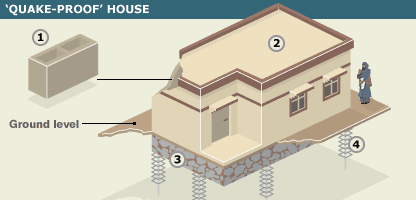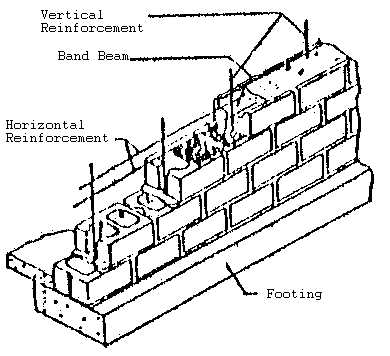CHUNG HOW CYONG
Architecture E-portfolio
Week 2 Task: Research on the Disaster Resilience City and Design A City.
What is a disaster resilience city?
‘‘Local resiliency with regard to disasters means that a locale is able to withstand an extreme natural event without suffering devastating losses, damage, diminished productivity, or quality of life and without a large amount of assistance from outside the community’’ ~Mileti 1999, pp. 32–33!.
Therefore, in short, it is acually a concept city that built on the purpose of withstanding natural disasters and reducing the destruction onto the city itself.
Why do we need a disaster resilience city?
Before building a disaster resilience city, it is better to examine the impacts of disasters in cities. Then, It will help you to explore why some groups are more vulnerable to particular hazards than others, while considering the role of social capital and adaptation for increasing the resilience of urban communities to disasters.This is important because the trend towards increasing urbanisation and larger cities is a major contributor to the rising toll of disaster losses globally. In addition, climate change predictions indicate that natural hazards such as bushfires, floods, storms and cyclones are likely to increase in intensity and possibly also frequency in many places, including cities.
Therefore, as to create a resilient city, the following criterias should take as references:
• Redundant—with a number of functionally similar components so that the entire system does not fail when one component fails.
• Diverse—with a number of functionally different components in order to protect the system against various threats.
• Efficient—with a positive ratio of energy supplied to energy delivered by a dynamic system.
• Autonomous—with the capability to operate independently of outside control.
• Strong—with the power to resist attack or other outside force. • Interdependent—with system components connected so that they support each other.
• Adaptable—with the capacity to learn from experience and the flexibility to change.
• Collaborative—with multiple opportunities and incentives for broad stakeholder participation
In short, as a Malaysian, I have my concern on this issue as the world is changing with no apparent reason. Malaysia used to be a disaster-free country before, but now earthquake and typhoon have occured recently in Sabah and Kedah. Government ought to take immediate response before the situation is getting worser.
Type of Disaster and Ways to WIthstand
(A) Earthquake
- Objective: To prevent the collapse of the buildings.
- Method: Build a strong and duticle foundation of buildings.
- Trend: 1. Building Materials- According to the The Earthquake Engineering Research Institute, precast panel buildings had good durability during the earthquake in Armenia, compared to precast frame-panels.
2. Earthquake Shelter- A cubical space/shelter as to present as an alternative earthquake-proofing of entire building.
3. Steel Plate Shear Wall System- A steel plate shear wall (SPSW) consists of steel infill plates bounded by a column-beam system as to resist the lateral loads of strong earthquakes and winds.
(B) Typhoon/Tornado
- Objective: To pretend the blowing up of builidings.
- Method: 1. Build strong and duticle walls
2. Add safe room to a new construction or existing structure above-ground, below-ground, inside the home, outside in the garage, or in the yard.
- Trend: 1. Cast-In-Place
2. Concrete Block Masonry
3. Insulated Concrete Forms
4. Precast Concrete
International Case Study- Japan
Q: How does Japan duel with the natural disasters in city planning?
Earthquake resilient city in Japan
Japan has had a long history of earthquake catastrophe and seismic activity. Earthquakes are the vibrations caused by rocks breaking under stress. The underground surface along which the rock breaks and moves is called a fault plane. Over time, stresses build beneath the earth’s surface. Occasionally, stress is released resulting in the sudden, and sometime disastrous shaking we call an earthquake.
In 2001, The Great East Japan Earthquake had occured, causing severe destruction to Fukushima and Miyagi.
Therefore, Tokyo Metropolitan Government (TMG) has came out with action plan for disaster prevention, but mainly focusing on the prevention of fire spread due to the impact of earthquake.
1. Acceleration of the establishment of fireproof zones in cooperation with the wards.
2. Construction of major city-planned roads to form firebreak belts.
3. Creating an atmosphere conductive to building disaster-resistant communities.
Conclusion: As to plan a disaster resilience city, it is crucial to add in the above mentioned criterias into the town planning. Natural disaster can happen anytime at anywhere, sometimes it is even unpredictable. Like the saying goes, prevention is better than cure. Therefore, a disaster resilience city should become the main focus of government in revoluting and improving the city.















Minami Sanriku Town in Miyagi before Earthquake
Minami Sanriku Town in Miyagi after Earthquake


